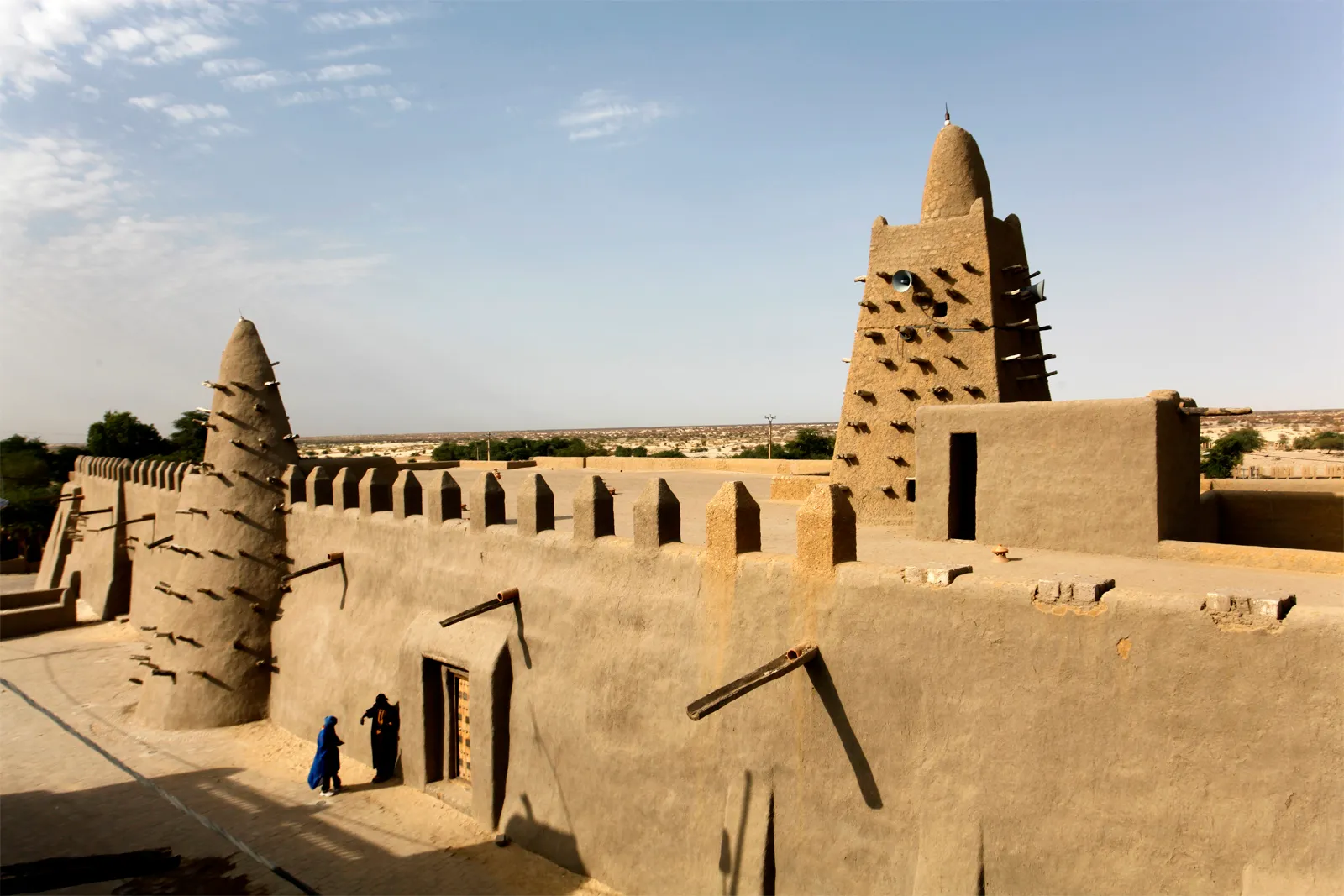“You can’t begin too soon to encourage an appreciation of art! And each artwork has a story.”

Baba showing his grandkids Macha Smyrne's "Tuareg Men"
“Why are they all wearing the same clothes?” asked my three-year-old grandson as his Baba shared with him this marvelous watercolor that brings back many special memories of working in the legendary city of Timbuktu.
“From Here to Timbuktu” goes the popular phase, suggesting the very edge of the world! Timbuktu is a city that has an aura of mystery in the Western imagination. Over the centuries, located on the southern border of the great Sahara Desert, it has represented the most remote and inaccessible place on earth.

Macha Smyrne, "Tuareg Men,” 1991, Watercolor, 25x35cm
However, founded before A.D. 1100, for more than six hundred years, this fabled city was one of the most significant spiritual, cultural, educational and commercial centers in the world. At that time, ancient Timbuktu had two things that the rest of the world wanted: salt and gold. Yet, during the city's golden age in the 15th and 16th centuries, the people of Timbuktu cherished books more than anything else. Known for its historic prestigious Sankore University, over 700,000 manuscripts were collected in Timbuktu over the course of centuries. Today, Timbuktu’s ancient mosques are considered World Heritage Sites.
It is associated today with the elegant Tuareg, a semi-nomadic people that principally inhabit the Sahara. Largely Muslim, the Tuareg are often referred to as the “blue people of the desert,” due to their indigo blue attire, including the veils they wear across their faces. They certainly make for quite a magical scene, as they caravan through the desert on their camels.
Between 1998 and 2003, I had the privilege of visiting Timbuktu numerous times, partnering with them toward establishing medical clinics and water wells in the surrounding villages (see the below photos), as well as coming alongside Tuareg contemporary artists toward facilitating new audiences for their creativity. For the Tuareg, life and art are inseparable, and they see clothing, adornment, art, dance, poetry and music as essential to the development of wholeness in one’s self. Their art takes its form primarily in silver jewelry, dress, distinctive leatherwork, illuminated manuscripts, and other highly decorated items, such as the doors of their homes.
The Tuareg are also known for storytelling and song. It is magical to sit under the vivid desert night sky around a campfire, listening to their folktales, proverbs and music, often accompanied by the swinging of swords and daggers.
Many of their proverbs shed light on the value they place on their nomadic lifestyle, like “Houses are the graves of the living.” Other proverbs are much more practical, such as:
“It is better to see for oneself than to be informed by a third person.”
“Salt doesn't say it's salty.”
“When the music changes, then the rhythm of the dance must change also.”
However, as a profoundly mystical and spiritual people, my favorite Tuareg proverb is:
“God has created lands with lakes and rivers for man to live. And the desert so that he can find his soul.”
PS: My grandson couldn’t understand why the four men in blue in the painting are sitting outside the tent, if it’s as hot in the Sahara as I told him it was!
About the artwork:
Macha Smyrne, "Tuareg Men,” 1991
Watercolor, 25x35cm


















